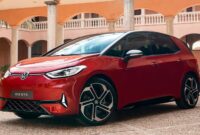
Toyota is world famous for its automobiles. It’s been a leader in the industry for decades, but it also enjoys exploring new technologies. The company has had the Toyota Engineering Society (TES) since 1947, which has mainly focused on projects related to the automobile. However, in 2017, the group took a detour into creating robots, and it has a new hydrogen-powered one to show off that can kick a soccer ball.
The robot, named Pixi, did have its challenges. The team had little experience in robotics, but that didn’t stop them from trying, completing the first model early. It would eventually kick the ball at speeds of 18 to 25 miles per hour (30 to 40 kilometers per hour), giving members the confidence to continue. However, they had to actually hit the field and gather data from human players to take their robot to the next level.
The robot might have been far outside Toyota’s wheelhouse, but TES had raided the automaker’s parts bin for Pixi. The robot had sensors used in assisted driving technologies to identify its target, and it wore a cape made from excess airbag material. The final product was a humanoid-looking robot ready to score on a penalty kick.
However, the lead-up to the big reveal in front of 300 children did not go smoothly. The night before the robot’s demonstration, members discovered its plastic neck bone had broken with no time to 3D print a replacement. Thankfully, one member found a solution, returning with a piece of wood the following day and fixing Pixi 20 minutes before the show. The robot would go on to kick the soccer ball at 53 mph (85 kph), a bit more than the 50-mph (80-kph) average.
TES is a 28,000-person strong team of volunteers within the company, with full-time members receiving development funds and access to research facilities. Toyota tasks TES with running projects that improve technology, skills, and knowledge, benefiting all TES members. The group created a basketball-playing robot, following it up with a garbage-collecting fish robot and other unconventional creations.
TES chose to build a robotic soccer player because of the sport’s broad appeal. Part of the group’s goal beyond improving technical skills is to “ignite the monozukuri (making of things) spirit” in the team members. “If we can’t spark the interest of others, it’s nothing more than a self-indulgent exercise,” said Yuki Murai, Toyota Vehicle Manufacturing Engineering Division’s assistant manager.
Robots in the automotive space are common. In 2020, Hyundai took an 80 percent stake in Boston Dynamics, investing $400 million in 2022 to make robots smarter. Tesla trotted out a robot in late 2022, and Ram Trucks made an inductive charging robot for its electrified Revolution pickup.



